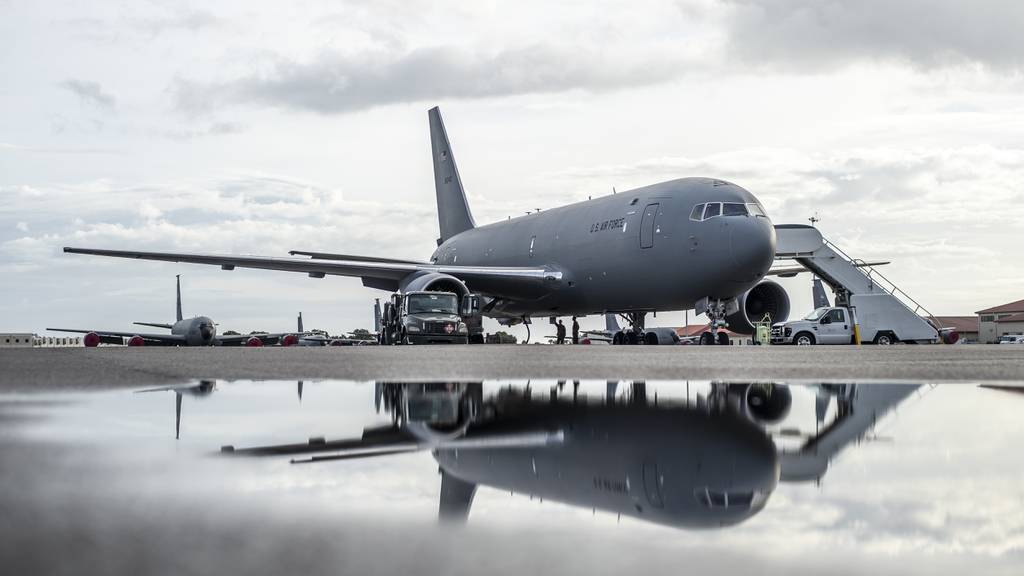
DAYTON, Ohio — The Air Force and Boeing identified a new KC-46 deficiency this spring that’s causing damage to the tanker’s air system ducts — adding to the aircraft’s running list of unresolved, high-risk design flaws.
The latest deficiency, designated a Category 1 issue based on the degree of risk and operational restrictions it imposes on the aircraft or its operator, involves a faulty fuel pump. Boeing, the company building the tanker, noticed this spring that vibrations from a KC-46 fuel pump were damaging air ducts in its bleed air system.
Kevin Stamey, the Air Force’s program executive officer for mobility and training aircraft, told reporters Tuesday Boeing has worked quickly to repair damaged ducts and the program is currently testing a workaround for the issue. A longer-term design fix is likely, he added, noting that the deficiency may soon be downgraded to a lower category because of these measures.
“We potentially have a path to downgrade that as we work toward a permanent fix,” he said during a media briefing at the Air Force’s Life Cycle Industry Day conference in Dayton, Ohio. “The mitigation is designed to minimize the damage caused by the vibration.”
The Air Force and Boeing are in varying stages of resolving seven Category 1 deficiencies. Col. David Hall, senior materiel leader for the program, said during the same briefing that three of those are close to a resolution.
Among the more high-profile issues involves the tanker’s remote vision system, or RVS — a camera system that tanker operators use to a refuel a receiver aircraft. After years of delay and rework, the Air Force in 2022 approved a redesign of Boeing’s design, dubbed RVS 2.0, that addresses image distortion and shadowing issues in the previous version.
RVS 2.0 was supposed to be delivered this year, but that timeline has since shifted to 2026. Stamey said a recent schedule risk assessment indicates that spring of that year is the target for that delivery.
Also Read: Boeing Faces New Cost Overruns as KC-46 Program Hits Snags
Boeing is also redesigning the tanker’s boom actuator, which is required to ensure it can safely fuel the A-10. Stamey said the company has completed prototype hardware for the fix and began lab testing it in May.
Per its development contract with the Air Force, Boeing must pay to fix most of the Category 1 deficiencies discovered before the program’s initial operational test and evaluation concludes. The company has racked up more than $7 billion in charges due to KC-46 design and manufacturing problems.
Asked whether the service is concerned the company’s development issues portend later future production challenges, Stamey was optimistic about Boeing’s quality management efforts.
“To their credit, they lean forward when they have a quality escape,” he said. “They’ve added inspectors on the line and they’re very sensitive to it.”
Author: Courtney Albon
Source: DefenseNews



